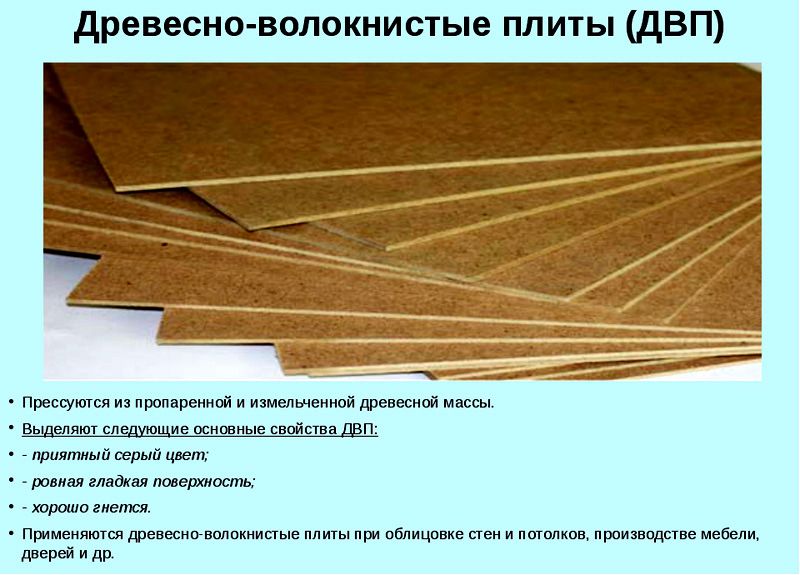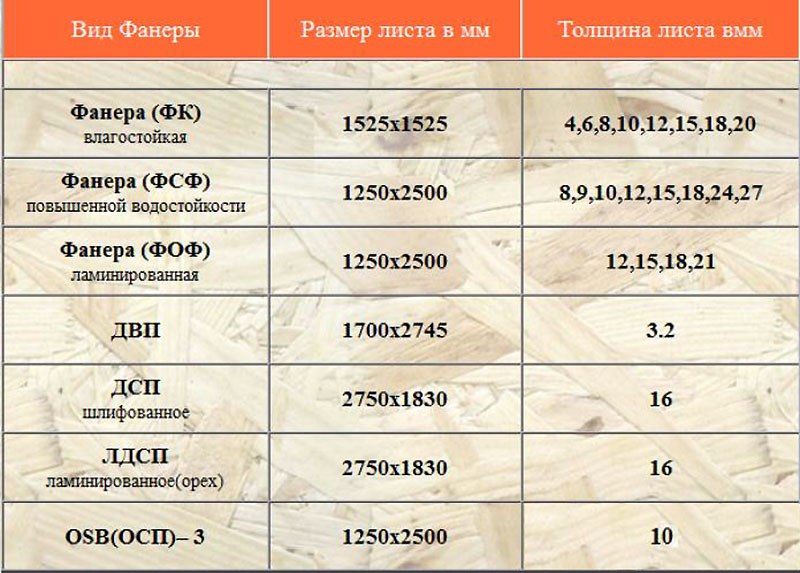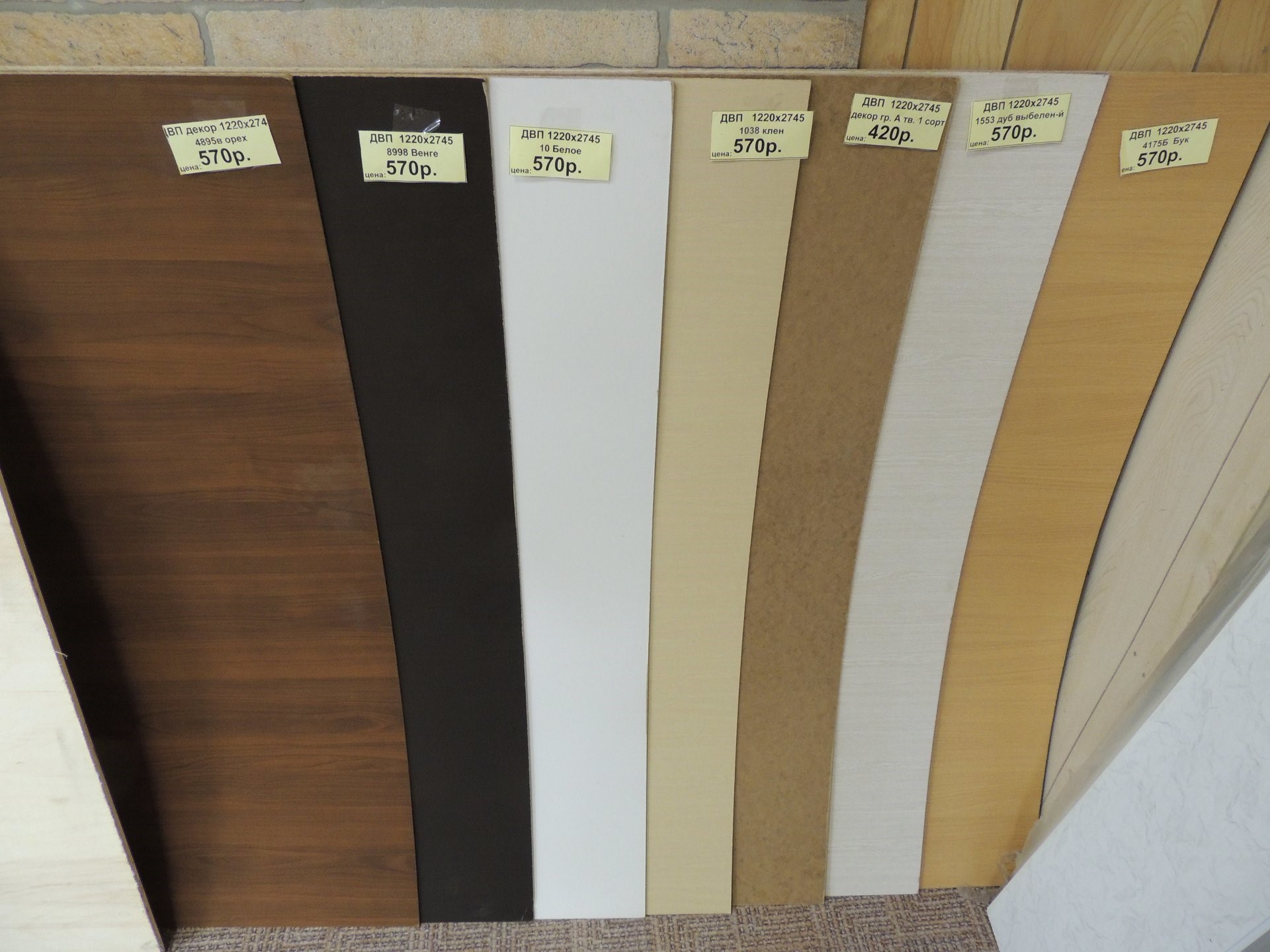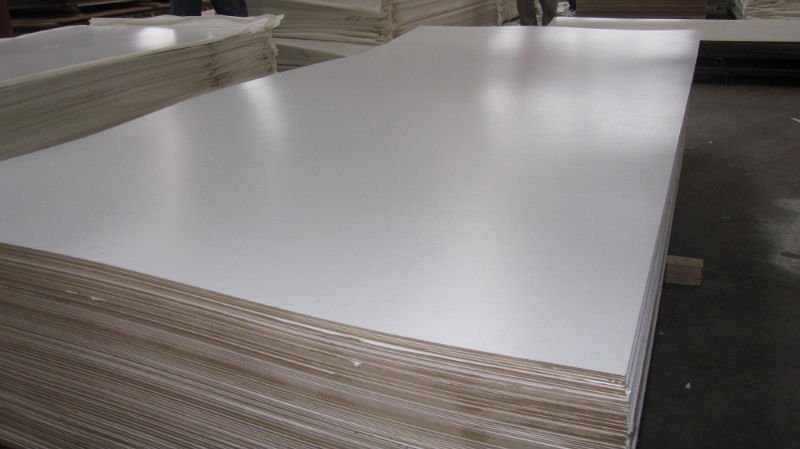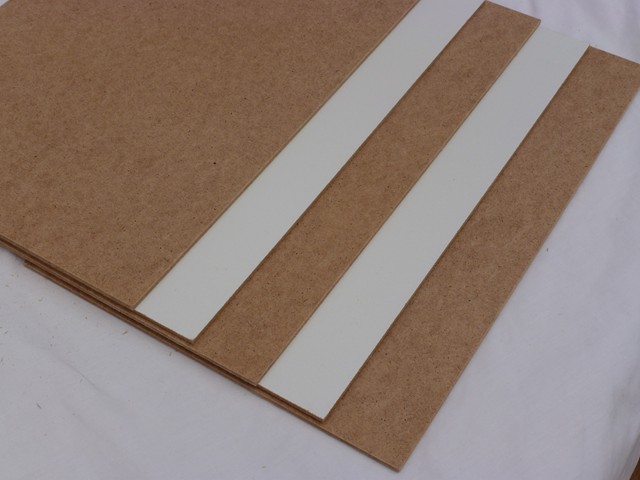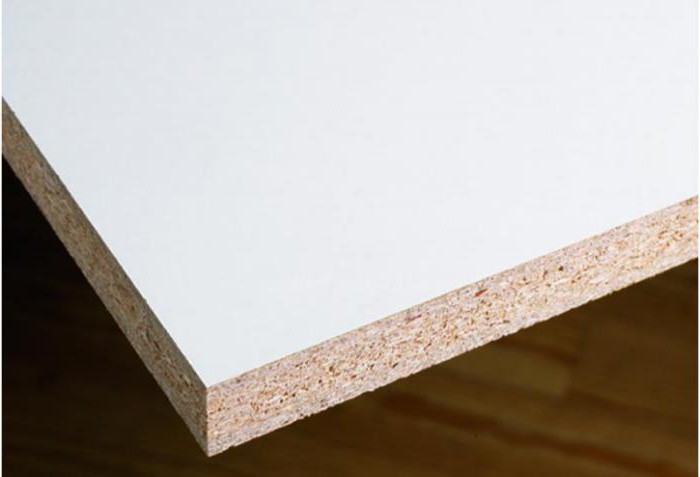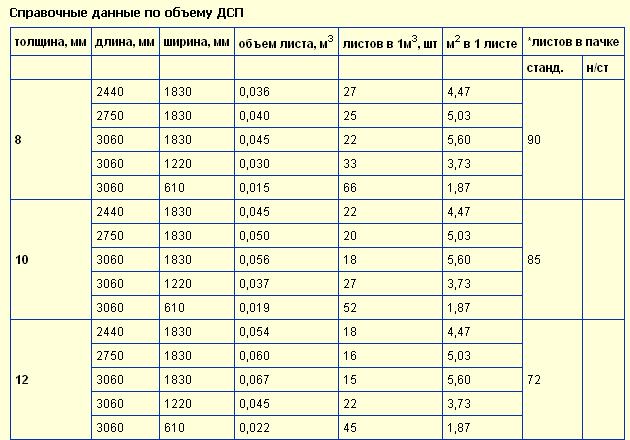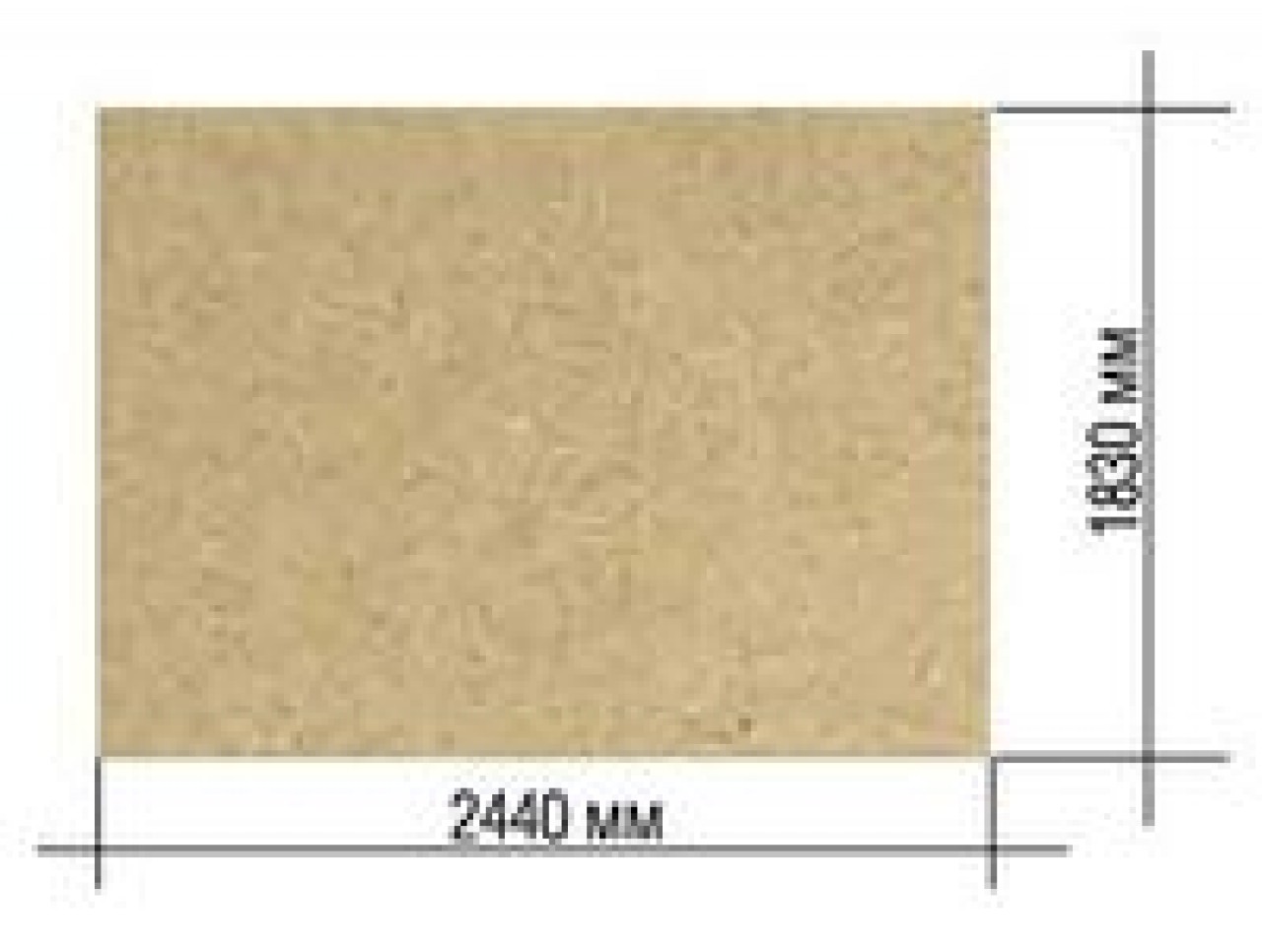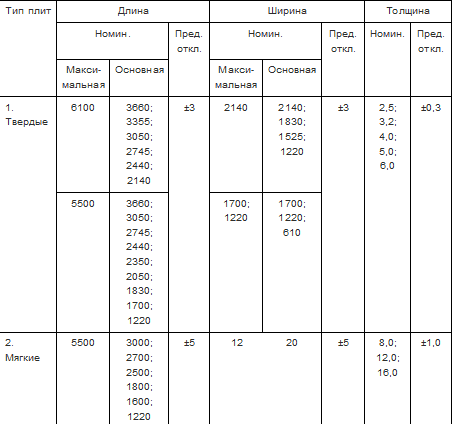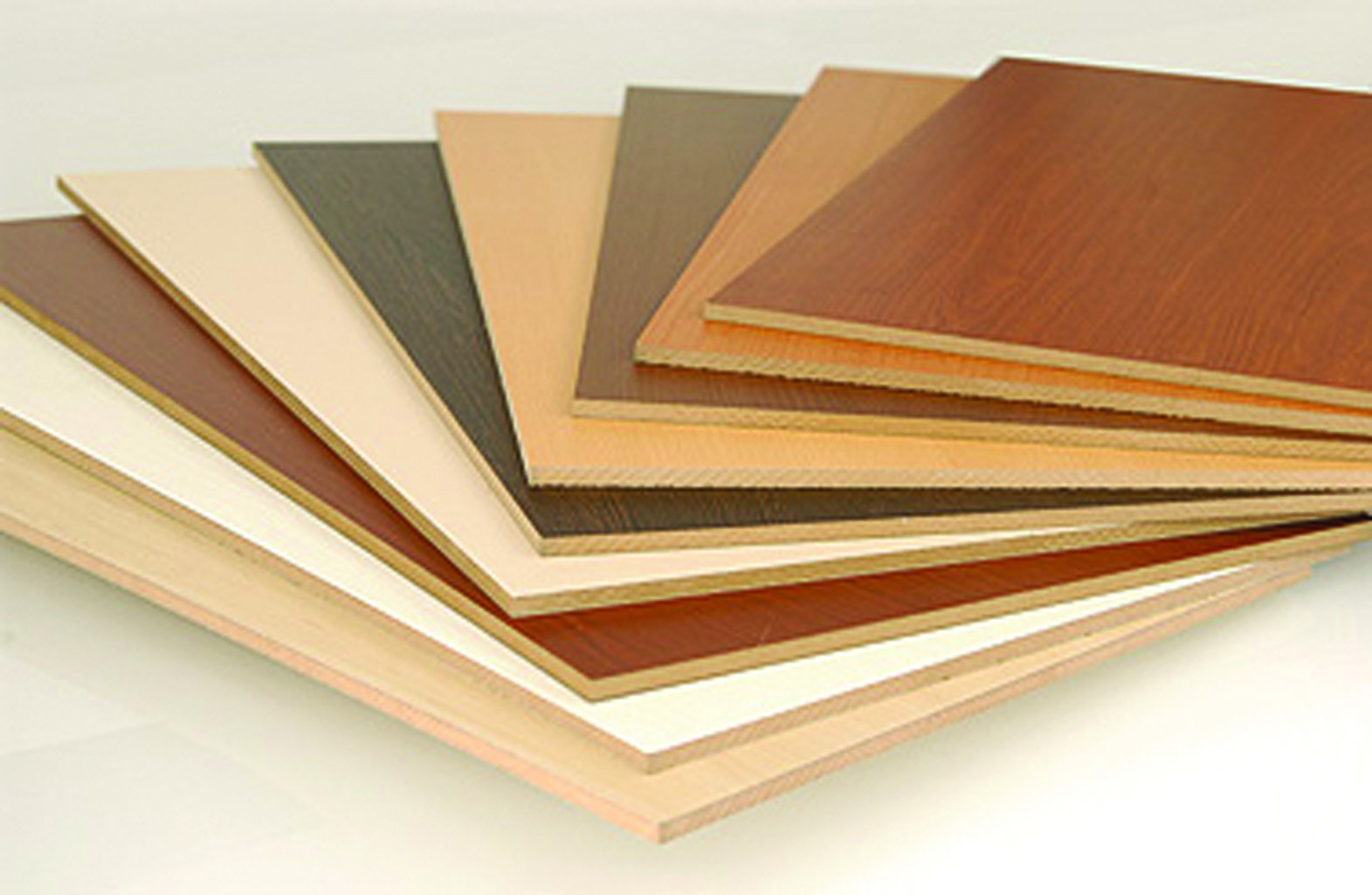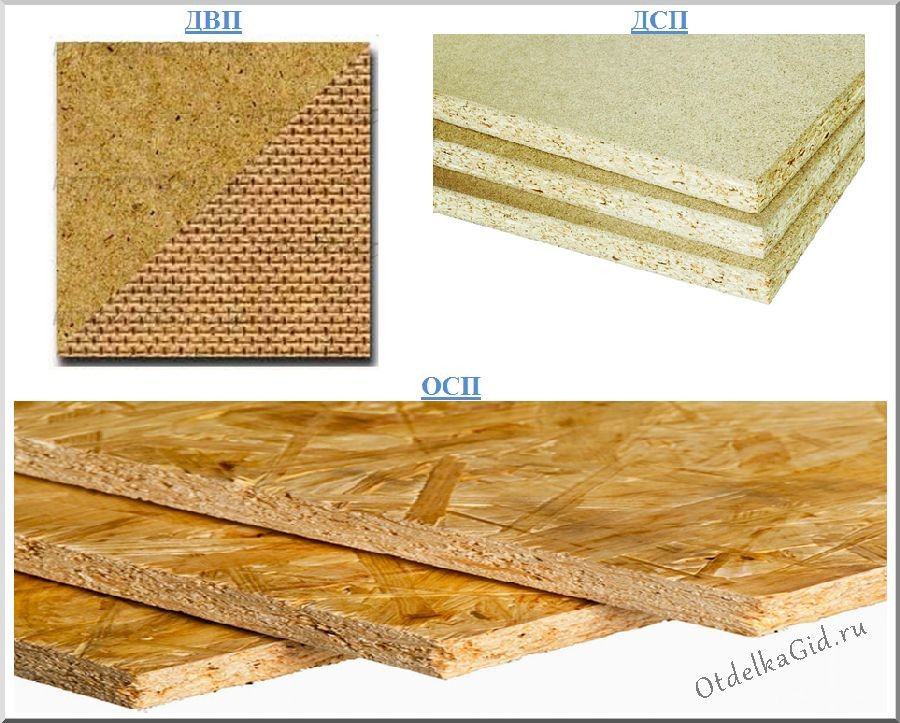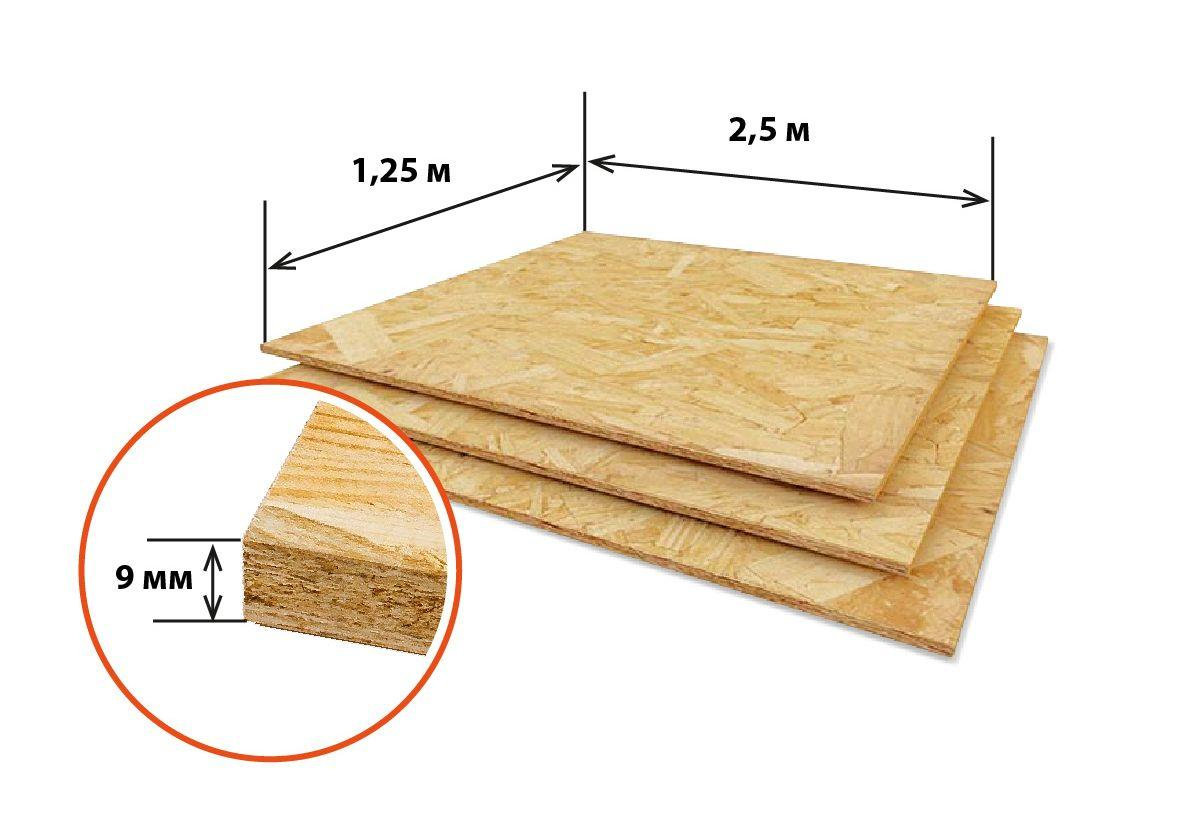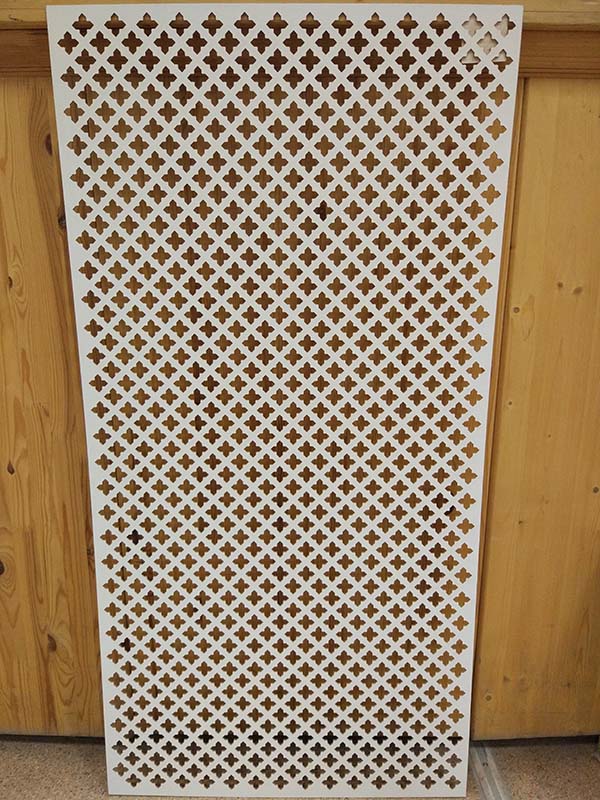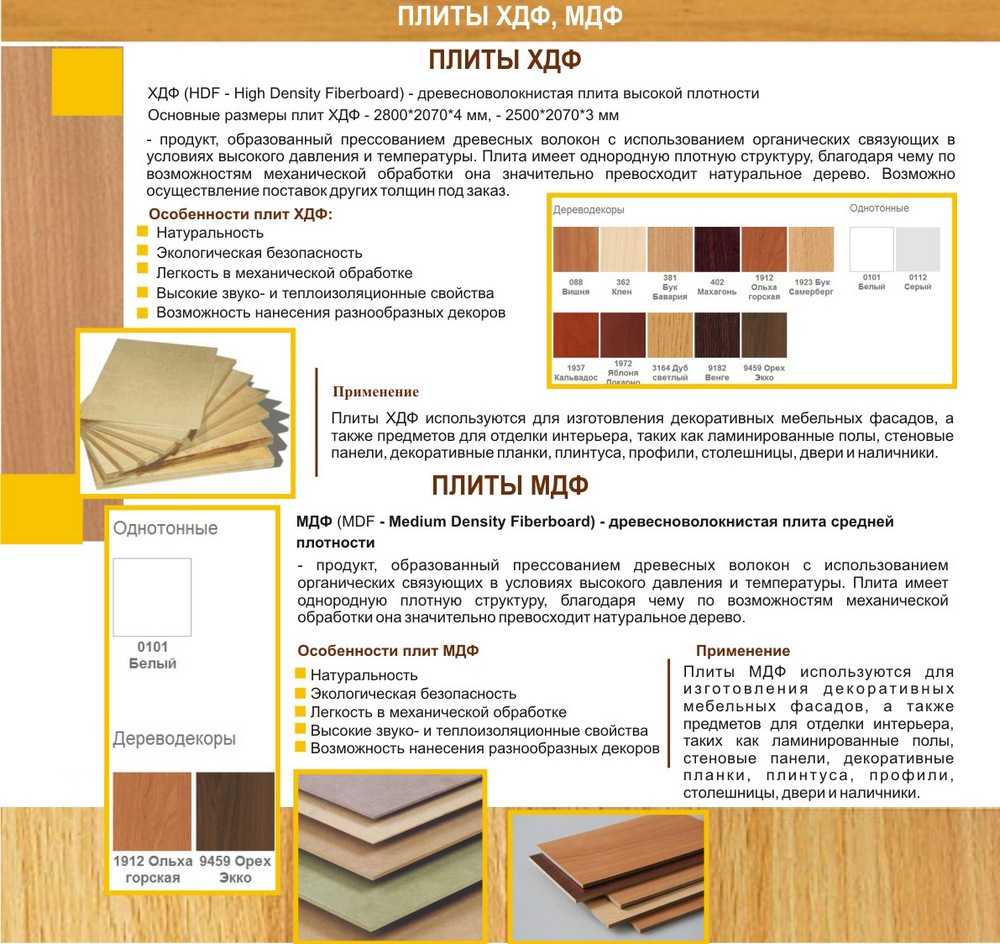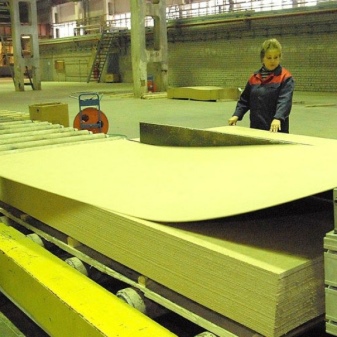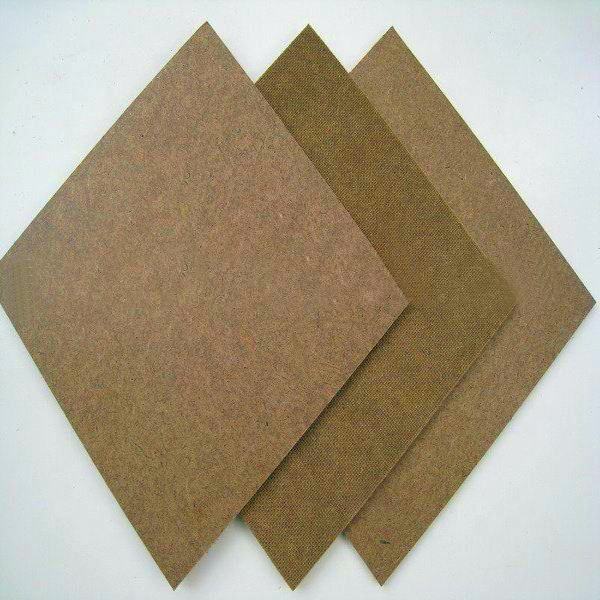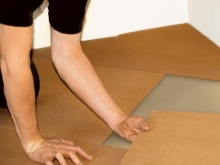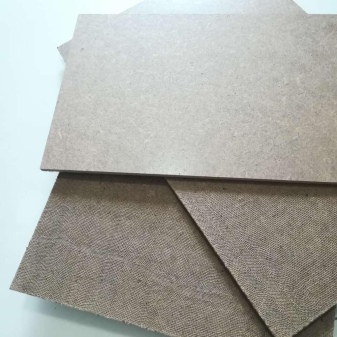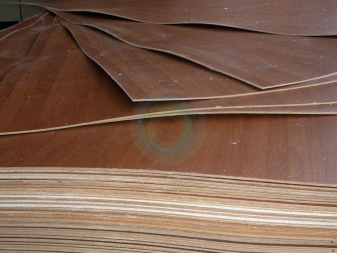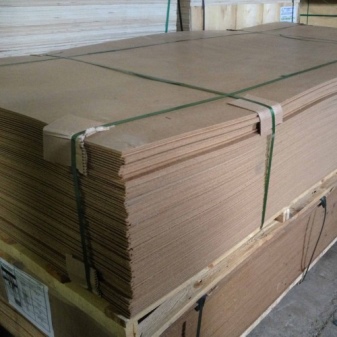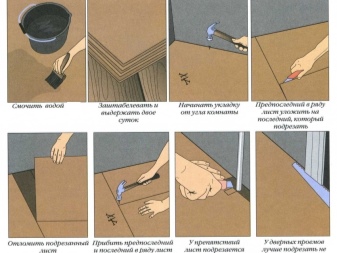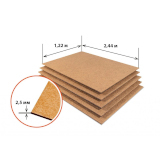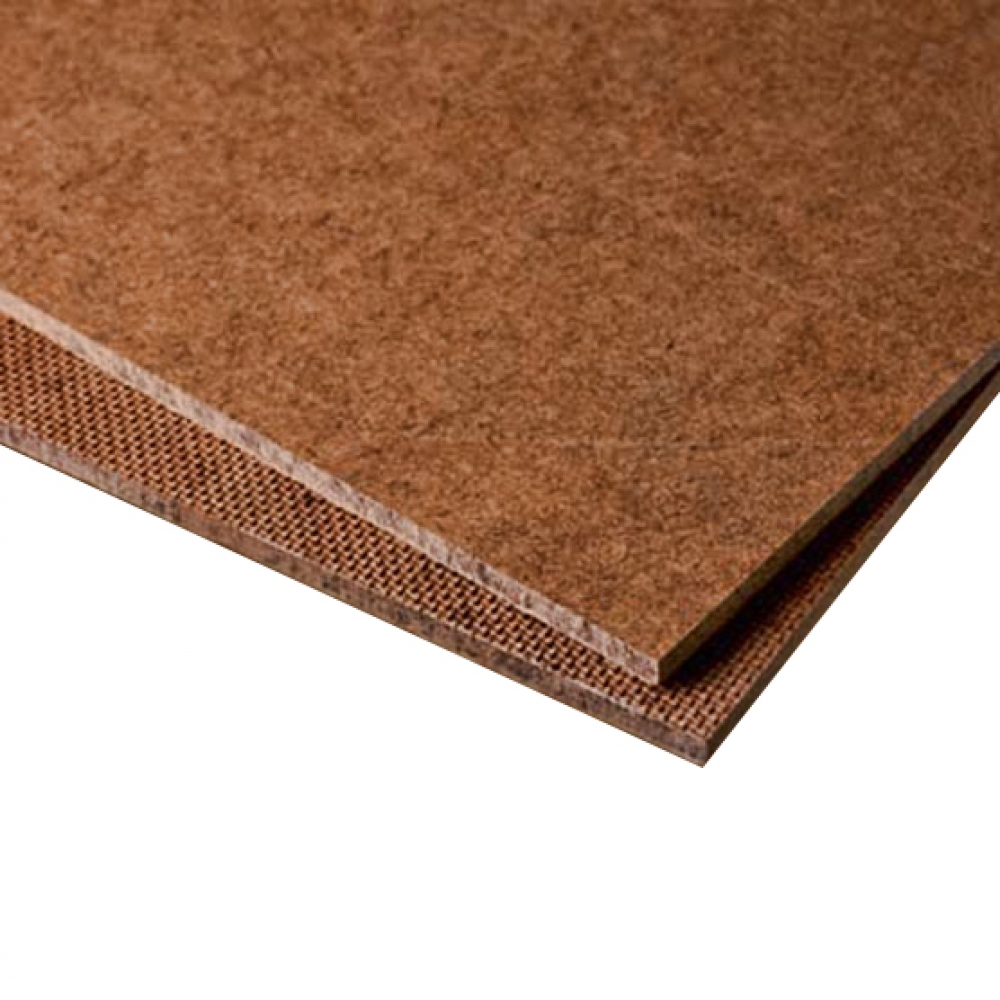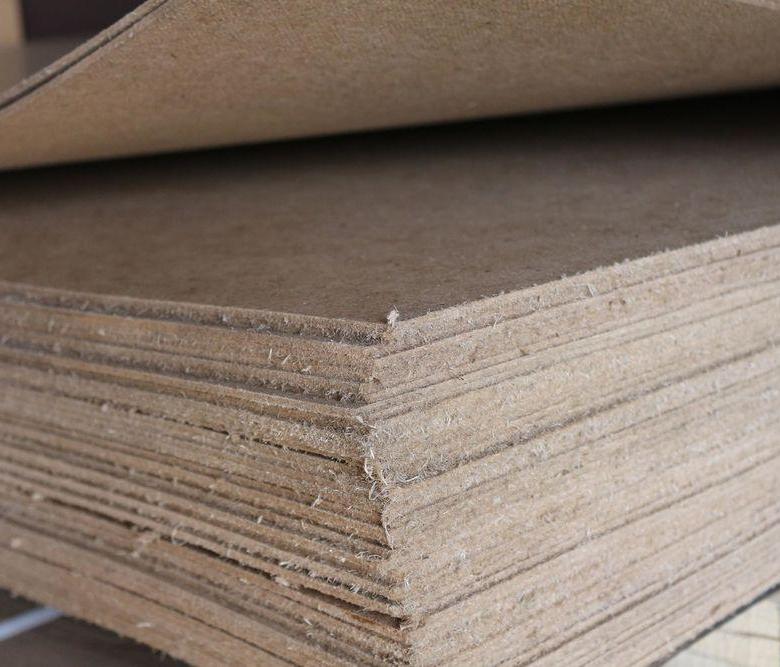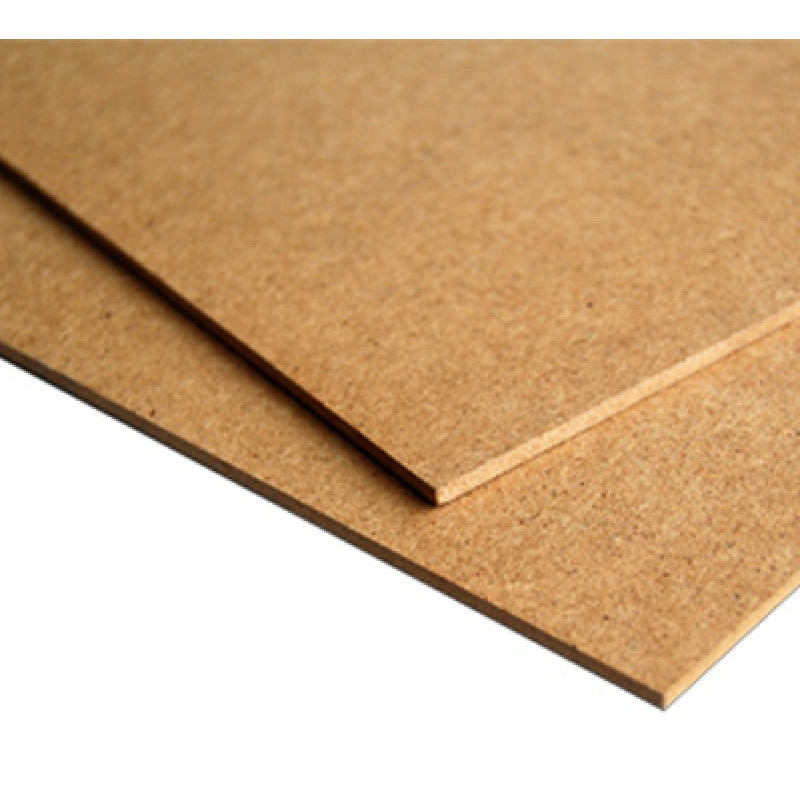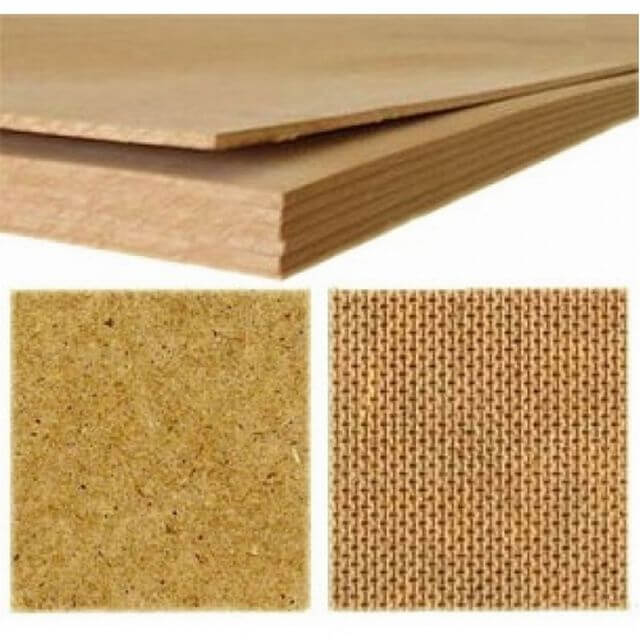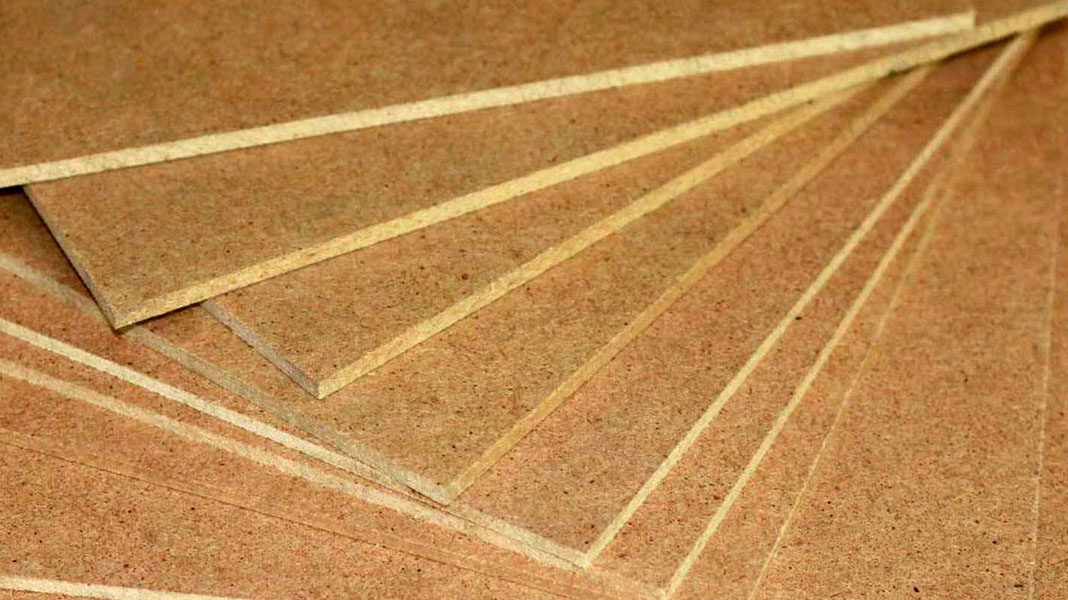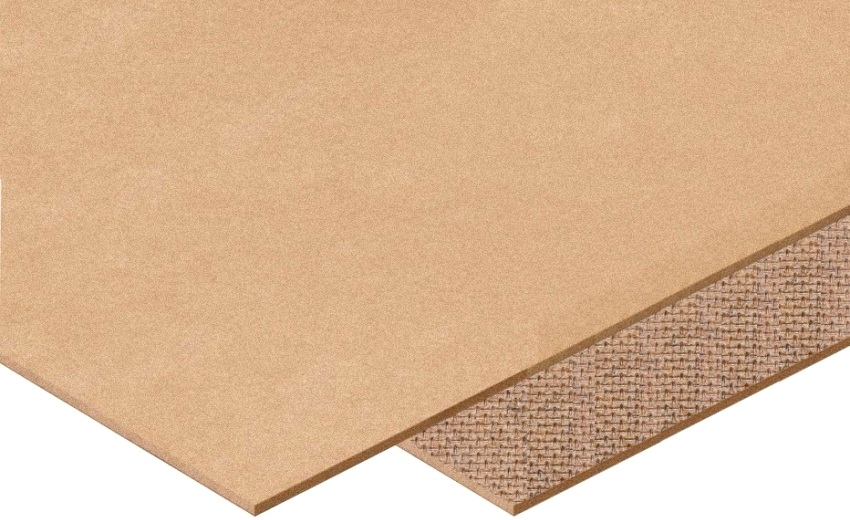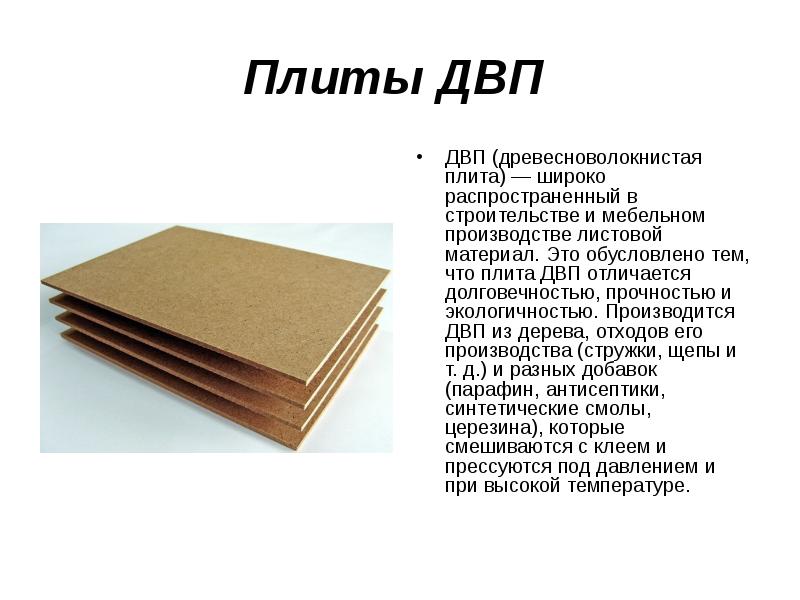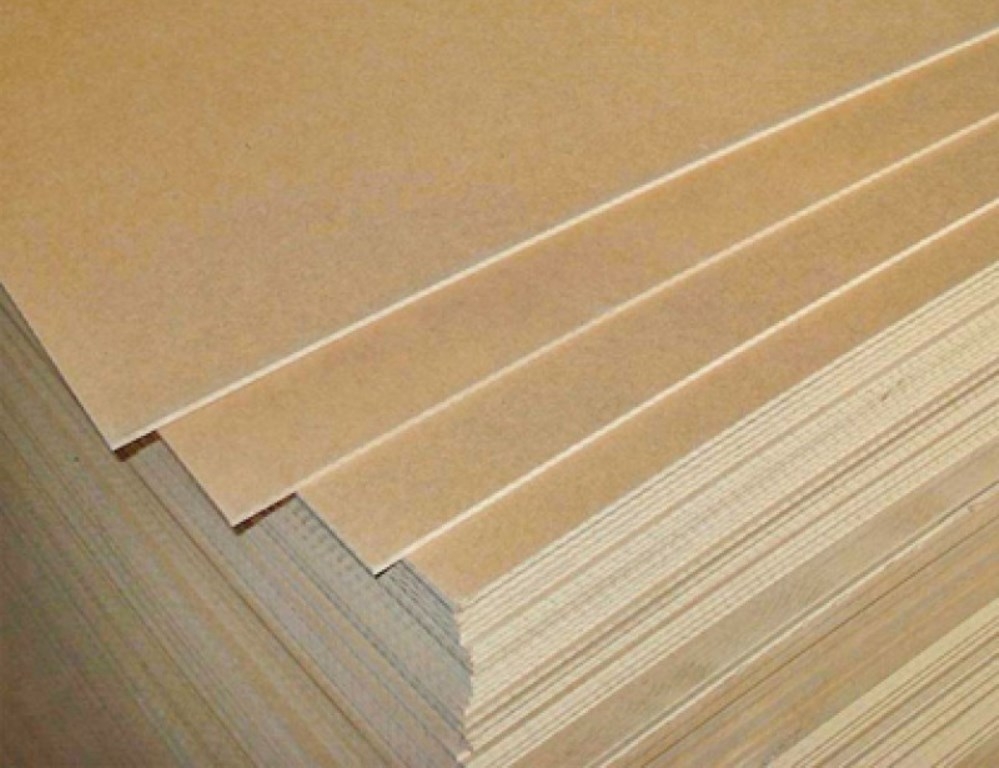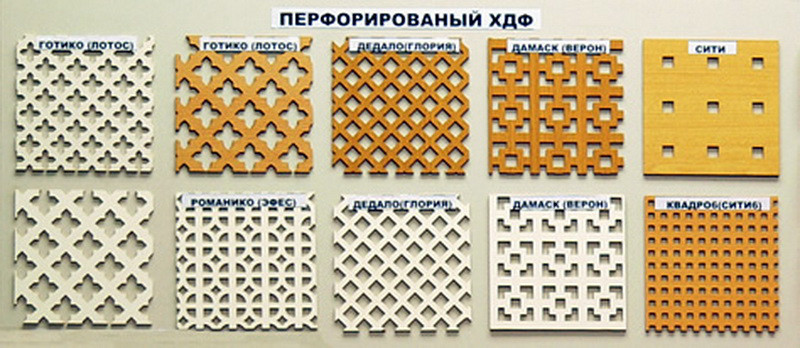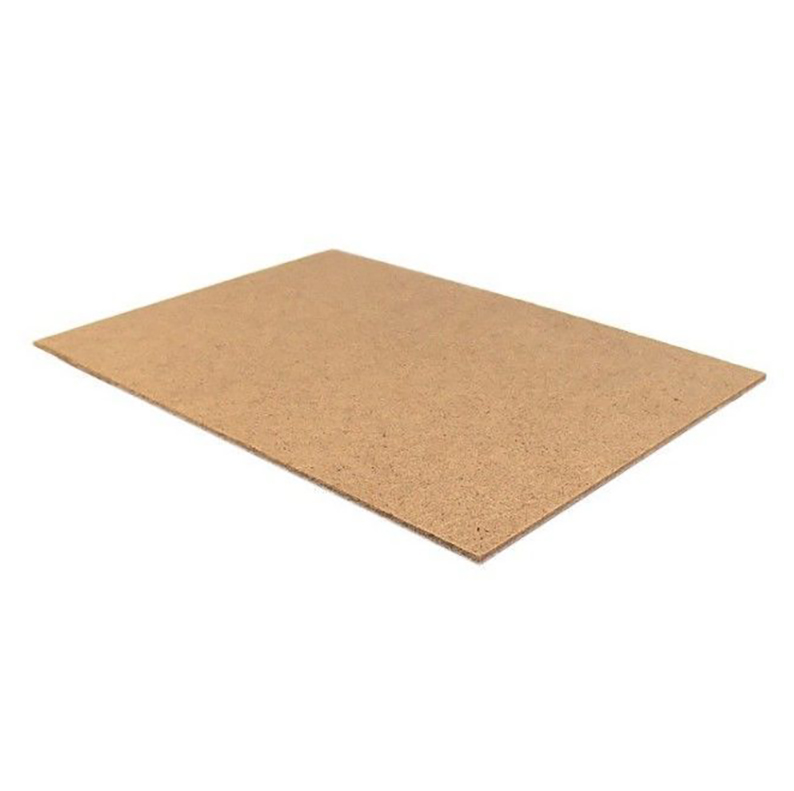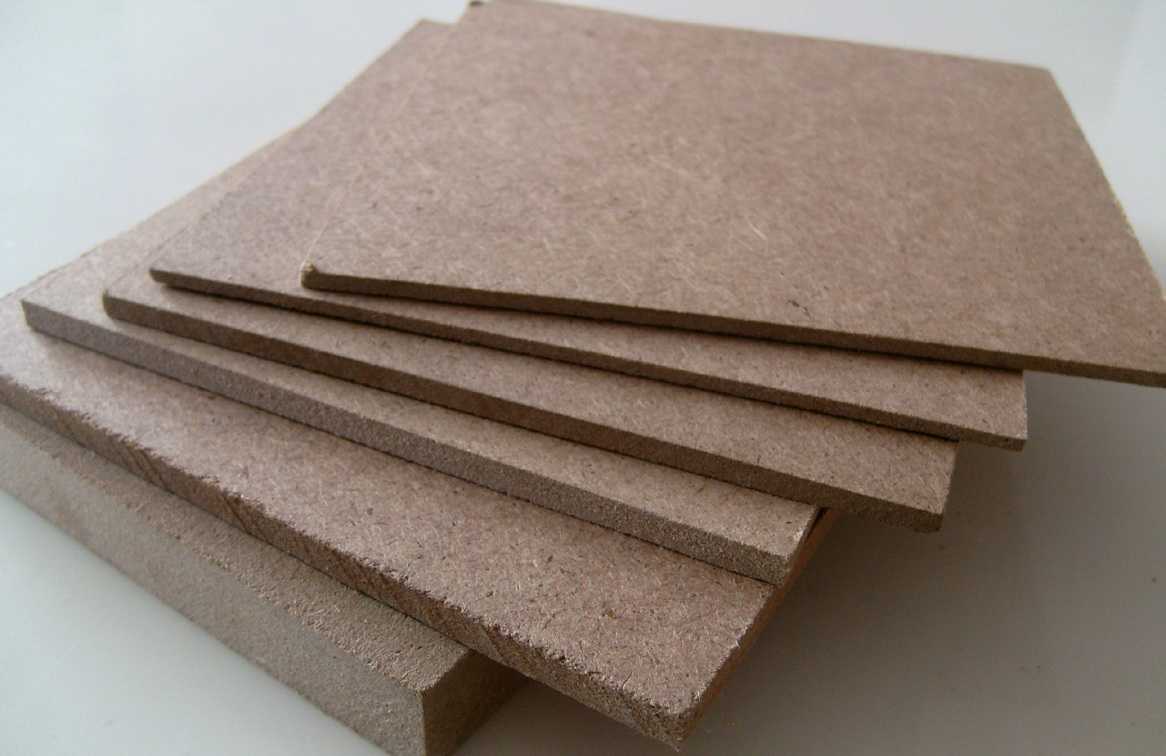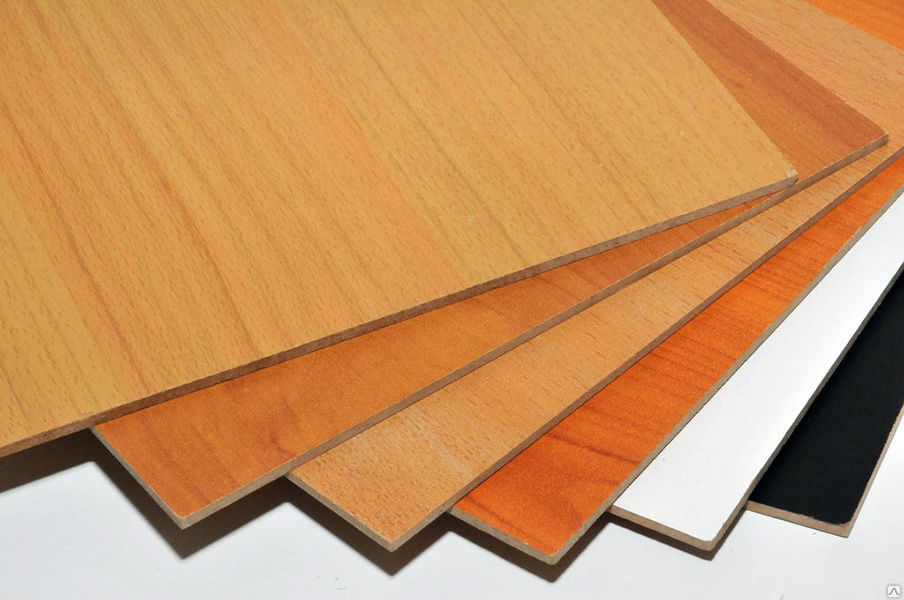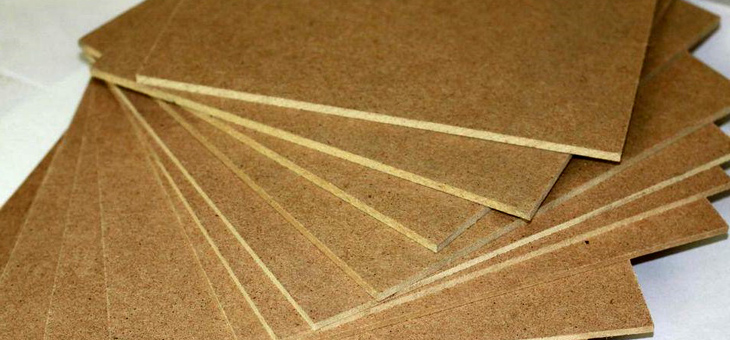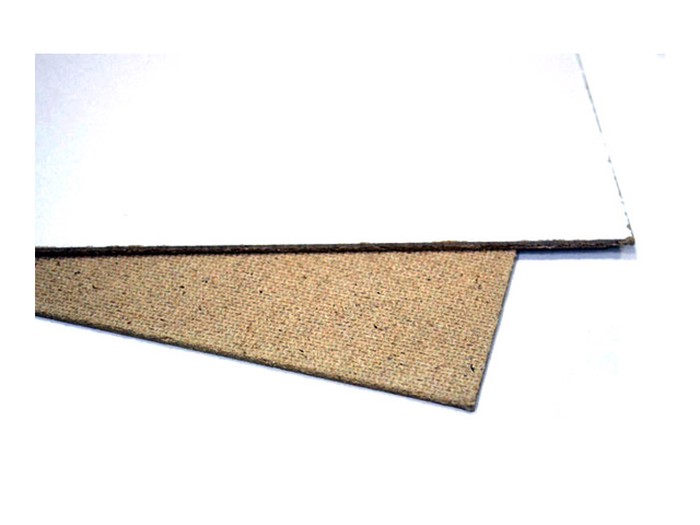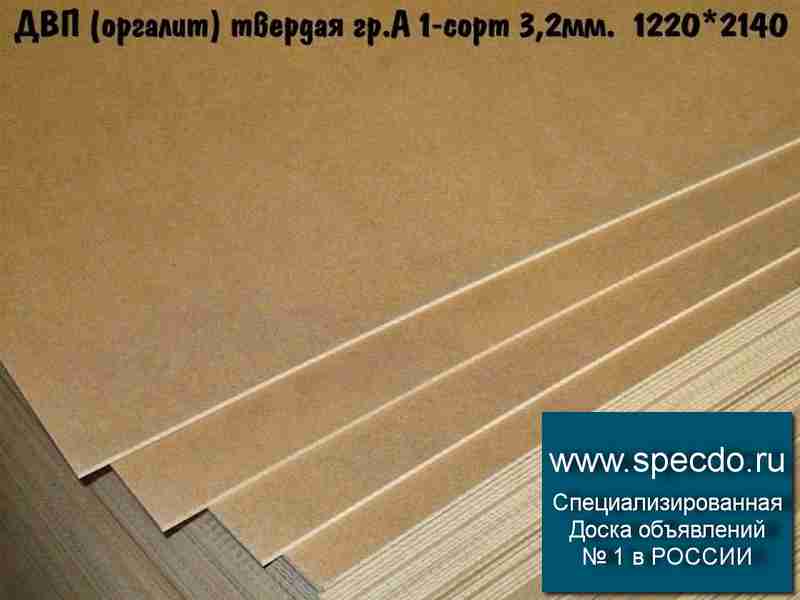What is fiberboard?
Together with the word fiberboard, the word "hardboard" is often used. In some cases, it seems that hardboard is some kind of separate type of wood-based panels. In fact, from a technical point of view, hardboard is a "folk" term that is most often applied to hard fiberboard. A difficult fate befell the concept of MDF, which, on the one hand, is very similar in production technology to fiberboard, but at the same time in the mass consciousness it often appears as a completely different material. MDF is a transliteration of the English notation MDF (Medium Density Fibreboard), in Russian it is called Medium Density Fiberboard.
Fiberboard is obtained by thermal pressing of wood fibers. In some cases, raw materials are dried for production. In fact, the raw material is waste from the woodworking industry. Various synthetic resins serve as binder components, as well as paraffins, antiseptics, refractory agents and other additives. The production method using resins is called "dry", if there are no such additives, then the production method is considered "wet". To obtain a "dry" material, the raw material is crushed many times, while no water is added to the composition. The sheets are stronger and more resilient.
Fiberboard can be of different thicknesses and densities
Fiberboard sheets are distinguished by high density and strength, and have a relatively low price. Thin sheets bend perfectly, which allows them to be used for sheathing curved surfaces. Fiberboard is used in construction, as a cladding in frame housing construction, for leveling the floor, walls. Also, partitions in railway passenger cars are made of this material.
Low density fiberboard is used as a sound insulation material. The chaotic arrangement of wood grains contributes to the fact that sounds "get stuck" in the material. This is the most inexpensive and easy-to-install type of soundproofing materials. There are more effective ones, but cheaper ones still need to be looked for.
Some types of fiberboard can be used as finishing materials - for finishing walls in rooms with normal humidity. For these purposes, fiberboard is used, one of the sides of the sheet of which is painted, covered with a decorative film, and laminated.
These are options for decorative finishes
Another area of application of fiberboard is furniture production. Usually this material is used as an auxiliary material - they make the back wall of cabinet furniture, hem the bottoms in armchairs and chairs, bottoms in drawers, etc. In general, the scope is extensive. There is, in fact, one drawback - without hydrophobic additives, the material behaves poorly at high humidity. It swells as it grows in size. At the same time, sheet material “goes in waves”. When dry, it remains deformed. So, in unheated or humid rooms, only certain brands of fiberboard can be used.
Flaws and dignity
HDF boards are made from high density fiberboard produced by dry process. On the front side of the boards, an image is applied using ultraviolet printing and then varnished. The standard dimensions of the elements are 2070x695x3 mm.
Advantages of slabs:
With a thickness of only 3 mm, such boards are very durable and resistant to all kinds of influences. Water, steam, open flame, dirt, boiling water, soot or grease get on them - all this is easily removed, and the decor retains its original appearance.
Durability of HDF panels.In comparison with other coatings, such an apron can serve for more than 10 years, undergoing constant stress and while maintaining the full saturation of the colors.
The material is environmentally friendly. Since the panels are made of natural wood, they are non-toxic and do not emit harmful substances even when heated.
The decorative qualities of the slabs are so diverse that they can be easily matched to any interior. The technology of photo printing allows you to apply absolutely any pattern or ornament to the plates.
This apron is easy to operate. No matter how dirty the material is during cooking, it can be easily cleaned with any non-aggressive and non-abrasive chemical agent.
The panels are easy to assemble. It is convenient to cut the slabs (if necessary, adjustment), there are several installation methods using different fasteners.
Plates can be installed even on the most curved surfaces
The high density of the material with its minimum thickness allows you to ignore the bends and unevenness of the base.
The anti-corrosion properties of the boards protect the walls from mold, which cannot be said about other apron panels.
In addition, the cost of such an apron is pleasantly surprising. Although the price depends on various factors, it is lower than the cost of the same ceramic tile. Increases the price of HDF panels for photo printing to order.
The high price for an exclusive picture is not the only drawback of HDF boards. The remaining flaws are as follows:
After several years of use, the outer layer of the varnish may turn yellow.
The standard dimensions of the slabs are limited and if it is necessary to cover a large area of the walls, additional costs for additional elements will be required.
When cutting, the material tends to crumble and requires a neat fit.
If a poor-quality apron is installed incorrectly, deformation of the plates is possible.
Low-quality cheap panels tend to deform from constant exposure to moisture
When buying boards, pay attention to the manufacturer .. The decorative qualities of HDF boards make the material unique.
Such an apron in the kitchen will become a real highlight of the interior.
The decorative qualities of HDF boards make the material unique. Such an apron in the kitchen will become a real highlight of the interior.
Types and properties of material
All solid slabs are marked with a "T" to which the letters are added:
- with a finely dispersed wood coating - Т-С;
- tinted - T-P;
- having a finely dispersed wood coating and tinted - T-SP;
- waterproof - T-B;
- moisture resistant Т-С - ТСВ;
- semi-solid - NT;
- superhard T-S - STS.
 Professional labeling of fibreboard has its own structure
Professional labeling of fibreboard has its own structure
Laminated hardboard - the main decorative variety, has a number of distinctive properties:
- Aesthetics. The coating has a wide range of colors and shades and faithfully repeats the structure of various tree species.
- Long service life. If the panels are used in rooms with constant humidity and temperature, then their durability is at least 15–20 years.
- Resistance to mechanical stress. Although slabs can be damaged by pinpoint impacts, their overall structure is dense enough to withstand significant loads.
- Additional sound and heat insulation. The cladding created cannot prevent the penetration of noise pollution into the house, but it is one of the steps of protection. In addition, due to its low thermal conductivity, it serves as an auxiliary tool for increasing energy efficiency.
- Ease of installation and processing. Elements are easy to cut and drill, which allows you to create curly details. Due to the stability during bending, fragments of the desired size can act as a template.
In addition to the laminated version, on sale there are sheets treated with paints and varnishes and pasted over with paper.The characteristics of all varieties are identical, with the exception of the wear resistance of the face layer.
 Painting is considered the easiest way to protect the coating.
Painting is considered the easiest way to protect the coating.
Standard hardboard products cannot be covered with veneer, since it must be applied on both sides, otherwise the thin product will be deformed. Therefore, HDF and MDF are most often used for veneering.
Application
It is used in construction, car building, in the production of furniture, joinery and other products and structures protected from moisture, as well as in the production of containers; as a basis for paintings in oil painting.
Fiberboard-based materials
- laminated flooring (the so-called "laminate", "laminate floor") is a building material made of fiberboard of a dry production method or mono-structure plates, faced with films based on thermosetting polymers.
- decorative panels for walls - a building material made of mono-structured or dry high-density fiberboard (from 800 to 950 kg / m³) with profiled side edges and lined with decorative paper on one side.
- monostructured wood board - medium density fiberboard (600-800) kg / m3, made by dry method of production from wood fibers mixed with a binder. It has a single fine-grain structure throughout its entire thickness and allows deep milling with a high-quality surface of the milled profile. It is used in the production of milled furniture fronts.
Features of mounting HDF panels
Installation methods for HDF boards are the same as for other apron boards. They are planted on an adhesive composition, fastened with self-tapping screws or on a crate. The latter method is used only in the case of a large curvature of the walls or if it is necessary to create a false box to hide communications.
To install the plates, be sure to use strips made of aluminum or plastic. They have different functions:
- the edging strip is installed on top of the panels, if the edge is not hidden by the attached objects of the headset;
- connecting elements are needed for the organic joining of fragments - they provide a strong connection, into the joint of which dirt or moisture will not clog;
- The corner piece can be external or internal, it is used to connect parts of the apron in the corners.
Planks are used for any type of panel mounting. From the tool you will need a jigsaw or a grinder, a drill with a cutter, a screwdriver, a level, a plumb line, a chopping thread, a construction pencil, a tape measure, a spatula and a mallet.
The main methods of fixing panels will be discussed in more detail below.
Algorithm for installing HDF on adhesives
- Free up space for work: remove the lower parts of the kitchen set, clean the wall of dust, debris and old coatings, treat with an antifungal primer.
- Measure, mark the places for the outlets.
- Cut off the necessary panel fragment, having previously tried it on the wall. Cut the slab as carefully as possible, since the material tends to crumble.
- Cut out the holes for electrical outlets with an appropriately sized cutter.
- Install the edging profile on the self-tapping screws.
- Apply liquid nails, hot glue or other compound to the back of the board and to the wall for better adhesion. Spread the mass evenly so that no cavities form.
- Fit the panel to the edging and press it firmly against the wall, wait until it engages.
- Use a mallet to achieve the perfect vertical level of the panel by knocking it in the places where it starts to protrude. Additionally, this will provide maximum grip.
- In the process of fixing the plates, install, if necessary, a connecting or corner profile, duplicating the connections with a sealant.
Fastening the apron with self-tapping screws directly to the wall
Installation of HDF kitchen wall panels using self-tapping screws is carried out according to a similar algorithm with the above. The method of installation differs only in the direct fastening of the slab to the wall. Instead of applying adhesive to the panel, drill holes in the wall and hammer in the dowels. Install the plate and screw it with self-tapping screws directly to the wall using a screwdriver.
Instead of self-tapping screws, you can use “quick installation” dowels. To do this, drill holes in the panel and hammer the fasteners into the prepared areas on the panel and wall. Unsightly caps of self-tapping screws are hidden either by cabinets or by special plastic plugs, which are best placed on a sealant.
Installation of panels on the crate
This method is used if it is necessary to hide it under the communication panel or in the case of a large curvature of the walls.
For the lathing, wooden slats 20x40 mm or an aluminum profile are used. Consider the features of panel installation using the example of a wooden frame:
- Surface preparation is different in that wallpaper or old finishes can be left in place.
- Measurements and cutting of panels are made in the same way as for other installation methods.
- First you need to prepare the slats. Cover the material with an antifungal compound or linseed oil, then dry well. This is done to increase the resistance of wood to the conditions of the kitchen.
- The slats are attached to the wall using quick mounting at a distance of 400-450 mm. They can be installed both parallel and perpendicular to the floor.
- Do not forget about the use of connecting strips, corner strips and edging.
- Attach the panels to the rails directly with self-tapping screws.
- Seal the joints with sealant for maximum joint strength.
Next, install the lower modules and secure the protective plinth, not forgetting about silicone or sealant.
What are perforated panels?
The products are made from fibreboard. For their production, raw materials obtained after processing or culling of trees of various species are used. The prepared mass is crushed to the desired state and pressed using the selected method. Then the sheets are cut to the required size and perforated using special equipment.
Depending on the basis, there are three groups of panels:
- Fiberboard. This material belongs to the category of "economy", its cost is minimal. For decorative purposes, we use products of a solid brand, which has the common name "hardboard".
- MDF. The products have medium density, but are very resistant to fluctuations in temperature and humidity.
- HDF. Such parts have higher characteristics in comparison with other varieties.
 Fiberboard, MDF and HDF panels are based on the same wood dust, differences in characteristics are achieved due to different production technologies
Fiberboard, MDF and HDF panels are based on the same wood dust, differences in characteristics are achieved due to different production technologies
Although modern technologies make it possible to perforate slabs on special equipment and on a large scale, if desired, the process can be performed independently. To do this, you need a stencil with a suitable pattern to get a uniform arrangement of parts, a hand-held jigsaw for wood and a file. The process is quite painstaking, but the result will exceed all expectations.
Peculiarities
Hardboard is not considered an independent nomenclature unit and is not separately regulated by state standards. This sheet product of woodworking is a type of fiberboard, the manufacturing technology of which and quality standards fall under the standards of GOST 4598-86.

Composition
The material is based on wood waste products - crushed to a minimum fraction of wood fibers. These components are mixed with an adhesive polymer composition and pressed under high pressure. The glue mass contains formaldehyde, which, when evaporated, is harmful to human health.The laminated coating, which is applied to some grades of hardboard, significantly reduces the harm from formaldehyde, preventing its evaporation and improving the properties of this material.
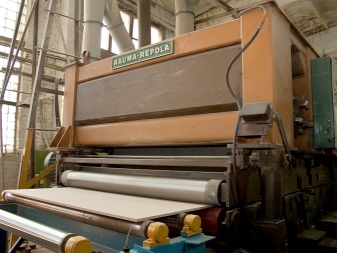

The composition of the wood fiber material includes a number of ingredients.
- Phenol-formaldehyde resins and polymer binders. They glue together wood fibers, and also give the material high density and strength.
- Pectol (a product of processing of the tall oil component), as well as other polymer compounds that increase the resistance of the material to mechanical stress.
- Antiseptic compounds that affect the resistance of wood fibers to the effects of fungus, mold and prevent decay processes. These additives also increase the moisture resistance of the material.
- Fire retardants are substances that give a material a certain fire resistance.
- Hydrophobic additives in the form of paraffins, rosin resin and others. The components provide the material with water repellency.
According to the technical documentation, hardboard contains no more than 1.3% of the binder adhesive relative to the total mass of the material. In addition, only low-toxic components can be used in the composition of polymers.
Specifications
According to GOST standards, materials related to hardboard are divided into 3 main types.
- Soft hardboard, marked with the letter "M". The weight of this material is small, due to its low density, which is 100-500 kg / m². If you look closely at the surface of the leaf, you will notice its porosity, like that of cork. Such hardboard is used for interior decoration work. With its help, they equip partitions, level the floor, ceilings or walls.
- Hardboard, marked with the letter "T". Due to its high density, which ranges from 500 to 800 kg / m², the material is positioned as moisture resistant and can be used not only for decoration, but also for construction needs. Outwardly, this material looks like a solid sheet of technical cardboard. Moisture resistance is especially well pronounced in varieties of this material that have a film lamination of the surface. Dense sheets are used for the manufacture of container boxes, as well as in furniture production.
- Superhard hardboard, marked with the letters "ST". Its density ranges from 800 to 1100 kg / m². The structure of such a material has a reinforced monolithic strength, therefore, hardboard is used in the construction industry, in the production of furniture products, for the manufacture of interior doors and for other needs.
The most popular option is hardboard without adding any finishing components. This sheet of natural beige color is often used to make the back walls of drawers or cabinets, transport boxes and other container products are made with its use, and also used in construction and finishing works.
The moisture resistance of different types of fibreboard differs depending on their density. For example, a semi-solid material marked with the letters "NT" can be in water for more than a day and at the same time swells only by 40%, and the superhard type "ST" under the same conditions will swell by only 15%.
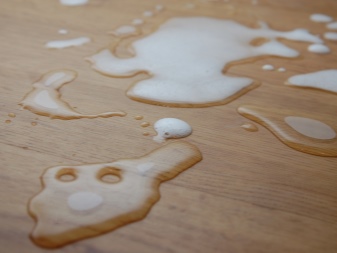
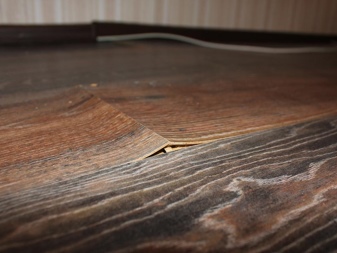
Laminated fiberboard: application in decoration
Refurbishment finishing is an important step. An apartment has perfect walls, but a poor finish will ruin the view, nullifying the efforts of the workers. And vice versa - the most uneven walls can be masked with beautiful laminated fiberboard panels.
There are many varieties of material. Often used laminated hardboard or MDF - they are made from wood fibers with the addition of glue with formaldehyde. The fibers are pressed and coated with a melamine-based resin. It allows you to apply the texture of stone, brick to the outer side of the panel, to protect materials from moisture.
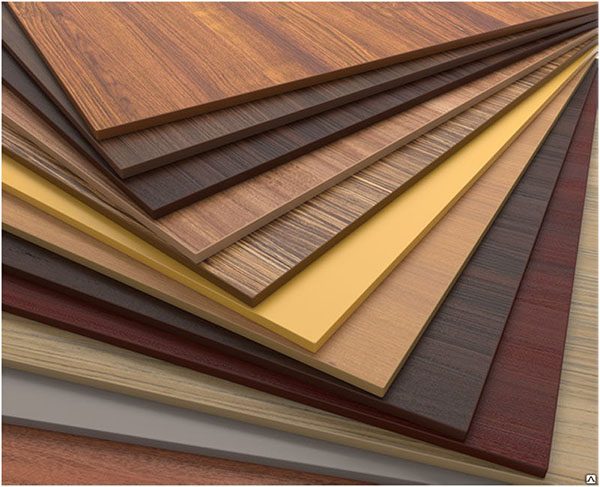 Fiberboard
Fiberboard
Advantages of LDVP:
- Strength - high pressure pressing increases strength, so the panels hardly sag, resist physical stress, and are not prone to abrasion.
- Moisture resistance - Compared to particleboard, which swells with water, fiberboard performed well in bathroom decoration.
- Resistant to high temperatures - not afraid of hot pots on the surface.
- Ease of cleaning, even with household chemicals - it is impregnated with melamine resin, therefore, when cleaning, the paint does not fade or rub off.
- Environmentally friendly - the outer laminated layer delays the release of harmful substances.
- Large selection - smooth, sanded surfaces with imitation of natural wood, metal are popular among buyers.
No less important information on the topic: Particleboard for walls
Installation technology
Fiberboard wall cladding is performed in various ways.
Laying on glue
This method can only be used if there is a perfectly level base. This process is best done in rooms with constant humidity.
Step-by-step instruction:
- The surface level is checked. If the deviation is more than 2 mm by 2 m, then finishing puttying is carried out.
- Priming is in progress. For this, a composition with deep penetration is used. It is recommended to apply at least 2 coats.
- The base is thoroughly dried.
- To glue the panel to the wall, you need a compound with good adhesion. An excellent option is "liquid nails".
- The markup is in progress. The elements are adjusted if necessary.
- If the seamy side of the sheet is smooth, it is pre-treated with sandpaper. This is necessary for a strong grip.
- The solution is applied evenly along the entire perimeter of the part and crosswise. Additional points are placed on empty areas.
- The fragment is set in its place, aligned with the markings and snuggles well.
- The rest of the parts should be glued in the same way.
Particular attention is paid to the joining of the edges: if no overlays are used, then the fit must be extremely accurate
On nails or screws
This method is more reliable even in difficult areas; the gluing of the plates is not always durable.
- Fixation can be done directly on a wooden base. For this, the elements are marked and adjusted to the required size beforehand.
- If the surface is made of concrete or brick, then the parts are pre-drilled at the desired points. Next, the panel is installed in its place, after which the markings for the self-tapping screws are transferred to the wall. Using a drill and a suitable drill, the holes for the dowels are created. The fragment is placed according to the marks and attached.
A significant problem that can arise is the visible fixation points. That is why they should be located in the least visible places or decorated.
When through-mounting plates on self-tapping screws, there is a problem with the decoration of the cap, in order to avoid this, you can take panels with a thorn-groove connection and fix them with clamps
On the crate
Internal work on the installation of fiberboard on the frame does not require leveling the walls. Such a structure is erected if necessary to create a partition. The space between the racks is suitable for laying insulation and communications.
Scheme of work:
- The base is cleaned of all unnecessary, cracks and cracks are smeared, impregnation with antiseptic compounds is carried out.
- To sheathe surfaces with panels, it is better to use wooden beams for the lathing. It must be thoroughly dried and covered with protective solutions.
- The walls are marked out, the curvature and the need for alignment are determined. Lines are drawn along which the racks will be set. Consider that they should be placed perpendicular to the decorative cladding.
- The first elements of the frame are mounted in the corners. To do this, they and the base are pre-drilled. The fixation takes place according to the level. A spacer is used if required.
- A cord is pulled between the parts, which serves as a guide for the remaining racks.
- Fiberboard is mounted on self-tapping screws; if there is a lock connection, it is better to use clamps. This will provide security and hide the anchor points.
- The set of panels starts from the corner, unless otherwise provided by the design concept. The first element is anchored at both edges. When installing, you need to use a level.
- The rest of the fragments are laid in the same way.
For a novice master, installation on a wooden crate with the help of clamps is considered the most optimal option.
After the completion of the process, moldings and skirting boards are exposed.
Production of fiberboard or hardboard
The manufacturing process is somewhat similar to the production of MDF. It also uses pressed dust obtained from wood processing, but unlike MDF, fiberboard is produced by wet pressing. That is, the wood fibers are pre-steamed, it is this technology that allows you to make thin sheets.
The material for the manufacture is waste obtained during woodworking. This waste is split and pressed under a special press, after which the finished material is dried.
An emulsion, a special solution and precipitators are added to the finished mass consisting of wood fiber. Then the mass enters the plate casting machine.

At the exit, a fibrous mass with a high moisture content is obtained - more than 70%. Then, solid and semi-solid boards are pressed under a hot press at a temperature of 130 - 180 degrees. Fiberboard insulating sheets are not pressed, but dried in a special chamber with low humidity.
Also, fibreboard can be produced from waste paper, the sheets are of the same high quality, strong and durable. Can be: insulating, finishing and insulating, solid or superhard. Sheet size: thickness 3 - 8 mm; length 1200 - 3600 mm; width 1000 - 1800 mm.
Video: Fiberboard production plant (thin MDF, ORGALIT)
Varieties of hardboard
In principle, we have already figured out that hardboard is a fiberboard of only increased strength. Sometimes, soft plates are called hardboard, this is not correct.
Hardboard can be divided into several types only in the category of solid slabs. Now it's worth learning about the types of plates or markings.
- T - both surfaces of such a plate are not finished;
- TP - the front side is tinted;
- TS - one of the sides of the slab consists of a fine dispersion mass;
- TSP - two types "C" and "P" are combined, tinted wood pulp of fine dispersion;
- TV - waterproof hardboard, face layer without finishing;
- TSV - also water resistant, one of the sides is finished with fine dispersion wood pulp;
- NT - semi-solid (hardboard density is low);
- ST - super hard hardboard, front side without fine wood finish;
- STS - superhard, finished with fine dispersion wood pulp on one side.
Many of these types of hardboard are additionally laminated with a decorative film - like wood, stone, tiles, metal, etc. Sometimes the slabs are varnished.
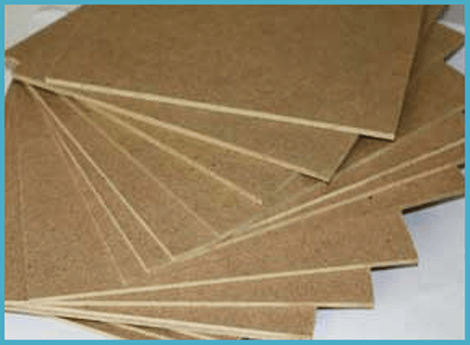
The back surface of the boards has a rough surface with grooves, it serves for better adhesion of the board to the surface when gluing. It happens that both sides are smooth. Each of the types will be most effective when used in its own niche.
That is, a semi-solid slab is suitable for ceilings, and they are cheaper. But for partitions, heavy-duty will be optimal - with increased density. For a rough finish, it would not be wise to use fiberboard with a laminated surface.
And finally, I would like to note the fact that hardboard, unlike other finishing materials (OSB, chipboard, plywood), is cheaper. For example, the price of one sheet of 2040 x 1240 x 4 mm will be within 120 rubles. As they say, savings on the face.
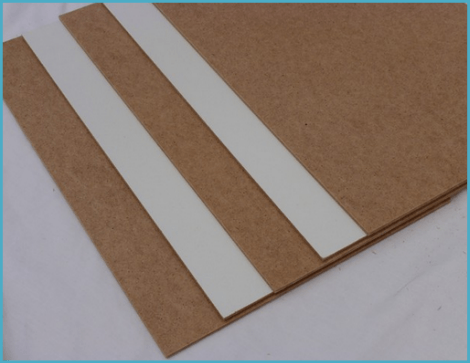
So, if the finishers who are repairing your house asked to bring hardboard, you can safely ask in the fiberboard store.
Watch the video: How to cut fiberboard.

